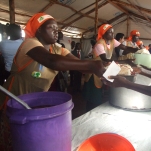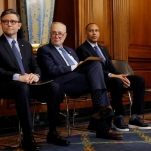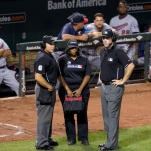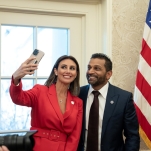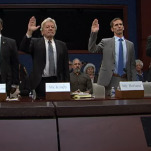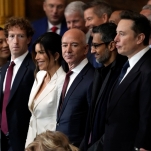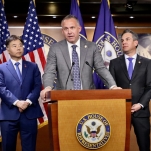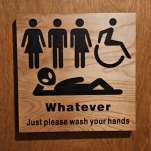What's Holding Minority Boys Back From College?
“I don’t want my sisters to follow what I’ve gone through.”
Yayudin Seid, 17, sits in the fourth-floor conference room of Washington, D.C.’s Latin American Youth Center (LAYC). The Ethiopian high school senior is on a path toward college and a career in biochemistry, but it wasn’t always that way. A few short years ago, the thought of pursuing higher education was an incomprehensible abstract and he was more interested in what he now calls outside “distractions.”
“I didn’t know what college would do to my life,” Seid said. “I didn’t even know what ‘GPA’ meant!”
He immigrated to the United States from Ethiopia as a 10-year-old and now lives with his parents and three younger sisters in an apartment in the city. His mother, he said, is always “so proud” to hear about someone succeeding in college, but she and her husband aren’t in a position to help their children navigate the complicated college application process. It’s not something either of his parents are familiar with and they’re both busy working caretaker jobs to support the family.
That’s where the LAYC stepped in. Seid heard about the youth center from a friend and was hooked after attending a Christmas party several years ago. Now, he’s part of several programs the center runs to help young people succeed. One program encourages teens to brainstorm and implement ideas to make their communities safer. Another is aimed at preventing the spread of STDs. The center has helped him find summer jobs and volunteer opportunities that add to the resume they helped him craft as part of his college applications. Last summer, they helped him participate in a program at nearby Georgetown University, which gave him his first taste of what a college campus has to offer.
“It’s a heads up for what the real world looks like,” Seid said.
The Latin American Youth Center in Washington, D.C.
Lost Boys
A quick glance at high school dropout rates and college attendance levels over the past few decades reveals an improving picture. Fewer kids are quitting high school and more young people are making their way to college.
-

-

-

-

-

-

-

-

-

-

-

-

-

-

-

-

-

-

-

-

-

-

-

-

-

-

-

-

-

-

-

-

-

-

-

-

-

-

-

-

-

-

-

-

-

-

-

-

-

-

-

-

-

-

-

-

-

-

-

-

-

-

-

-

-

-

-

-

-

-

-

-

-

-

-

-

-

-

-

-

-

-

-

-

-

-

-

-

-

-

-

-

-

-

-

-

-

-

-

-

-

-

-

-

-

-

-

-
















